Olive Oil Milling
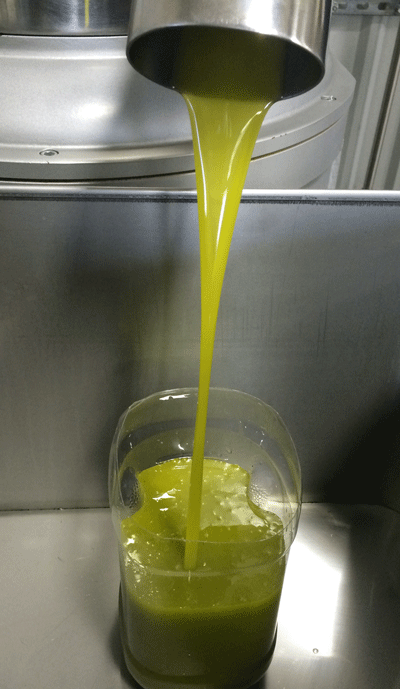
First Florida Oil – Shaw Olive Mill Lakeland, GA- 2014
Olive milling is an art and a science. While there are many considerations when processing olive oil; the basic process has not changed for thousands of years. There are four basic steps in the process:
- Harvest: Selecting harvest date based on maturity of fruit, required sensory characteristics and other factors. Olives should be processed within 4 hours of harvest to maintain quality. The olive millers art is to select fruit with the correct coloring to optimize desired taste. Greener fruit often suggests a smooth, grassier taste; darker fruit might have more of a bite. A good miller will configure the mill to accommodate the fruit. More mature fruit with more water content may require difference size openings in the plates used to crush the fruit.
- Cleaning: Fruit from the harvest bin must be cleaned of leaves and twigs, pebbles, bits of wire and other foreign material often gathered in the harvesting process. After removing material other than olive (MOO) the fruit must be washed. A “wet” or more mature fruit may require some drying before processing as too much water (in fruit and on fruit) may impact oil quality
- Crushing: After fruit is cleaned and washed, it is crushed (olive pit and all) into a thick brown-purple paste often referred to as paté. Several methods are used to crush the fruit. Some millers prefer old-style granite crushing stones. Others use a modern “hammer mill” device using high-speed cutting “hammers” to macerate the olive pit and flesh.
- Malaxing: After olives are crushed, the mixture is fed into a malaxing machine. The malaxing process involves stirring the olive paste until a slight sheen of oil appears on the surface of the paste. Attention to temperature is critical in this process. Malaxing usually takes about 45 minutes. Often enzymes and/or talc are added in the malaxing process to help break down the cell walls and release the oil molecule inside.
- Pressing: After malaxing loosens the oil from the pulp, the mixture is subjected to a pressure process that separates the oil from the flesh, pit and water making up the pulp mixture. Olive presses have improved over time from older gravity presses to high-speed decanters using centrifugal force to separate the oil from the pulp.
- Bottling and Storage: After processing olive oil should be stored away from heat, light and oxygen. In large olive mills, nitrogen is pumped into the top of large storage containers to keep out oxygen. In smaller production, oil should be bottled off as soon as possible and stored in a dark, cool (under 68° F.) place. Containers should be constructed of inert materials such as glass or food-grade plastic containers.
Click here for a list of Harvesting and Milling Equipment and Services
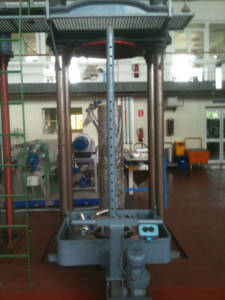
Olive Hydraulic Press
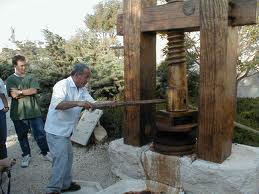
300 year old olive screw press
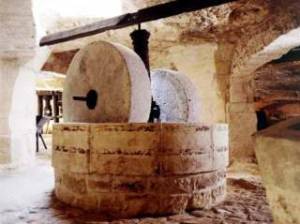
Olive Crushing Stones
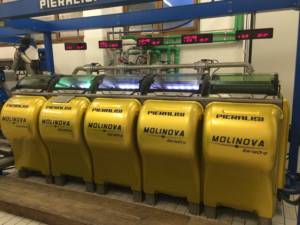
Pieralisi Malaxing Machines at Italian Olive Mill
Malaxing Process Video
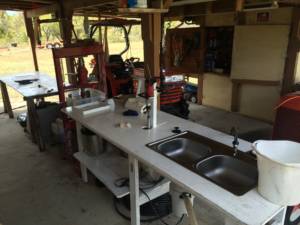
Don Mueller’s Home-Made Olive Mill
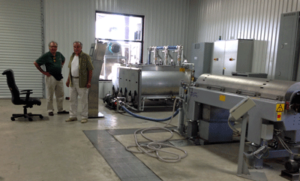
Georgia Olive Farms Mill
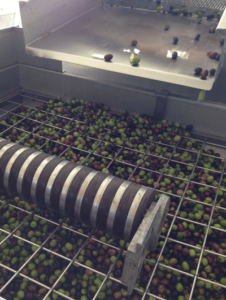
Olive Washer

Olive Maturity Index
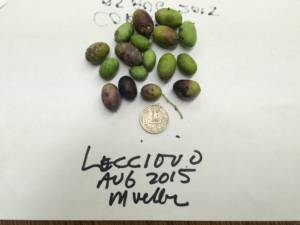
Leccino – mid-mature
We need your help
The Florida Olive Council is a non-profit organization certified under Federal tax code 501(c)(3) and Florida statutes Chapter 617. We are supported by your contributions. Ninety-five (95%) of your donation goes directly to supporting olive research. Our directors and officers receive no salary or other compensation. Donate
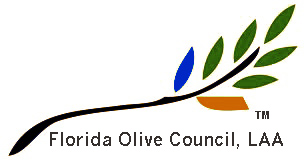
Add Your Comment